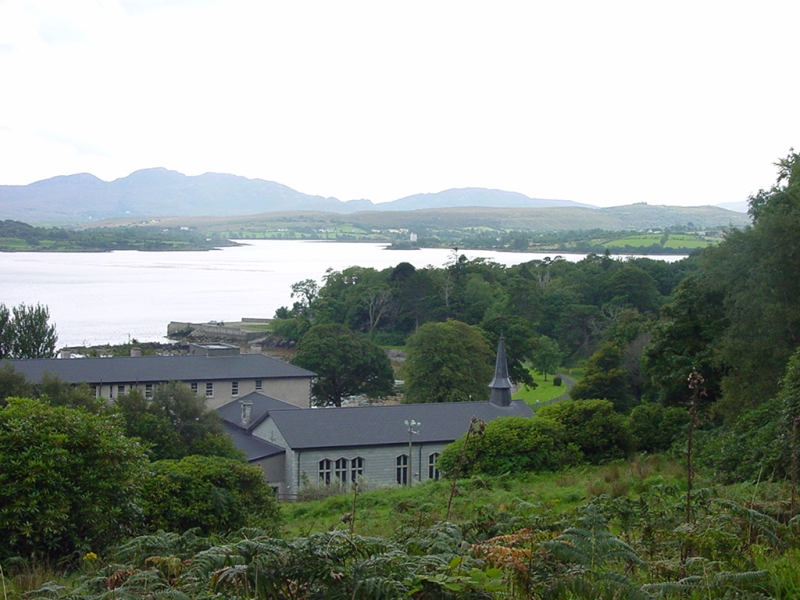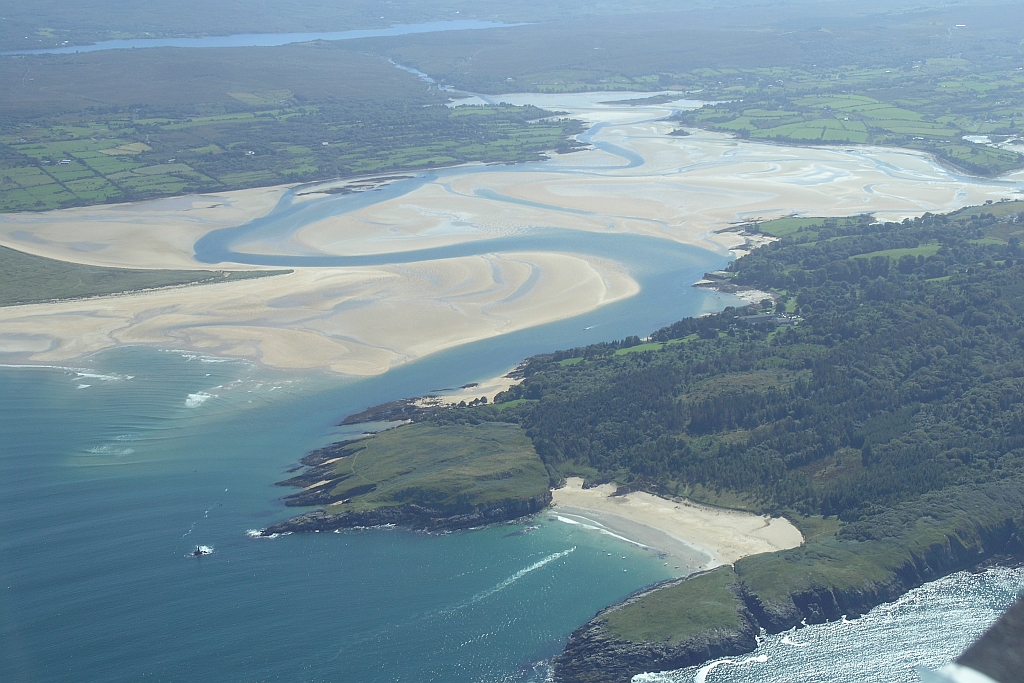6
North Western Parts
A view of the sea shore of the Back Strand and beyond is Clonmass head and Clonmass Island. The small rock is known as Little Isle and has large numbers of nesting birds in springtime. It is particularly favoured by Cormorants which is not surprising when we consider the large food supply which swims past with every tide. Further out is the western shore of Melmore which is the peninsula on the other side of Sheephaven Bay.
The picture makes it look very tranquil but it is not always so. When the tide is running fast and a strong westerly wind pushes up the sea swell the channel between the Island and mainland becomes a very interesting place to be in a canoe or dinghy. The swell grows as the water is pushed into the narrows and cross waves form. We have been through on one occasion when the waves were so high that we could not see the shore from the canoe though it was only 20-30 metres away. Like I said; interesting!
Walk through the woodlands and you come to the Franciscan Friary at Ards House. Built by a very wealthy family called Stewart, it was one of their homes for many generations before the main estates attached were taken over by the Irish Forestry department and the rest sold to the tenants. The house itself was bought by the Church and is now run as a retreat centre and a rest and holiday place for church people. There are only a few of the Friars there on a permanent basis but they never lack for company. It is an idyllic place which has a permanent air of peace. This view looks down over the house and chapel to the south of Sheephaven Bay with Doe Castle in the centre and Lough Salt mountain beyond.

Just beyond the roof the house is the Ards pier where coasting vessels called in to land coal and other bulk loads and to take aboard sand from the Muckish quarry or timber and other agricultural products.
Looking down on the south of Sheephaven from above the Ards the forest and the beach at Binnagorm are seen with the Friary and pier on the far shore. The permanent channel snakes its way around the sands to the mouth of the River Lackagh which can be seen on its path down to the sea from Glen Lough.
